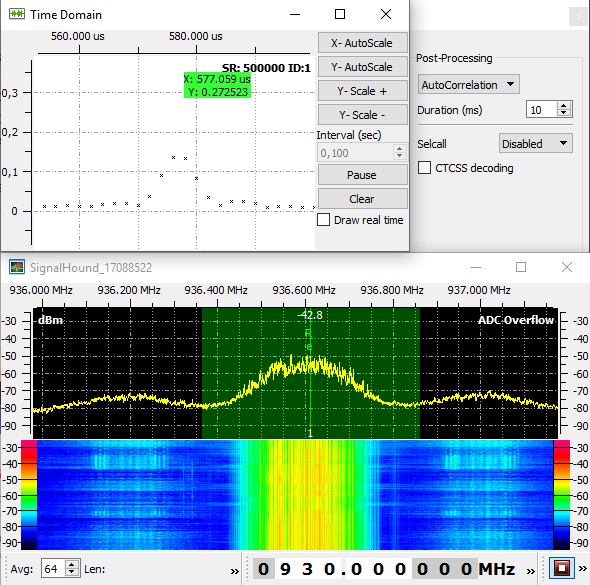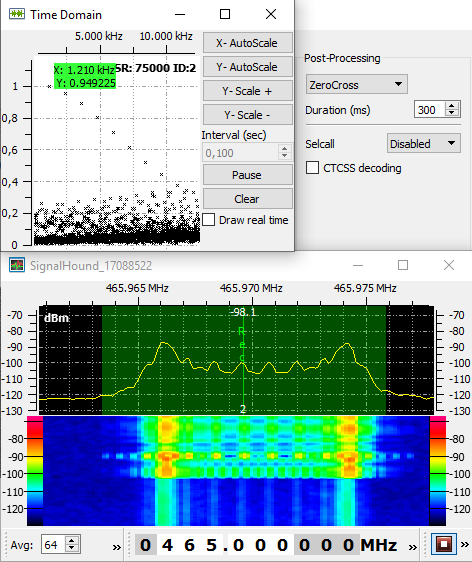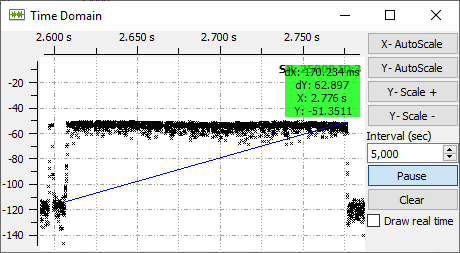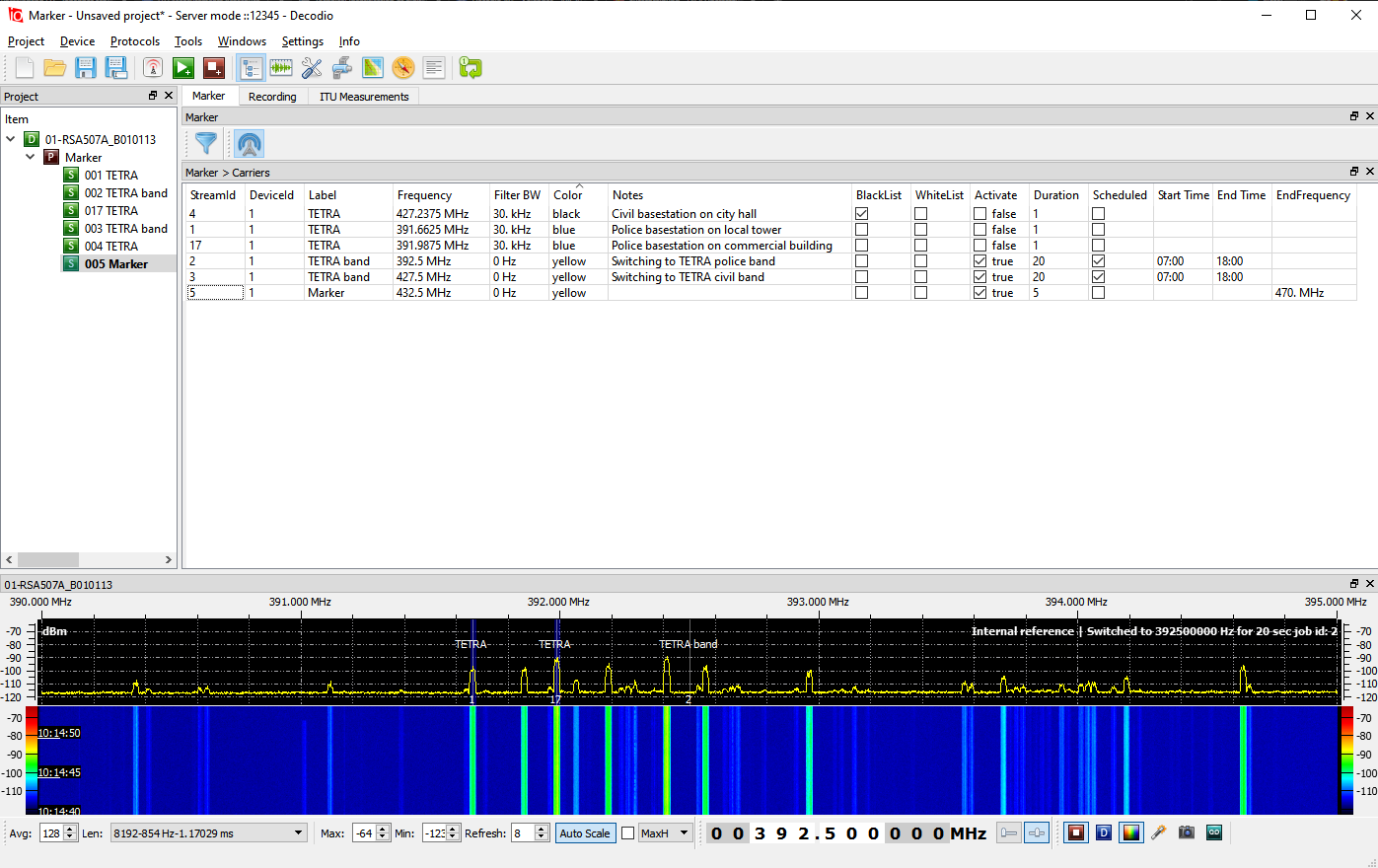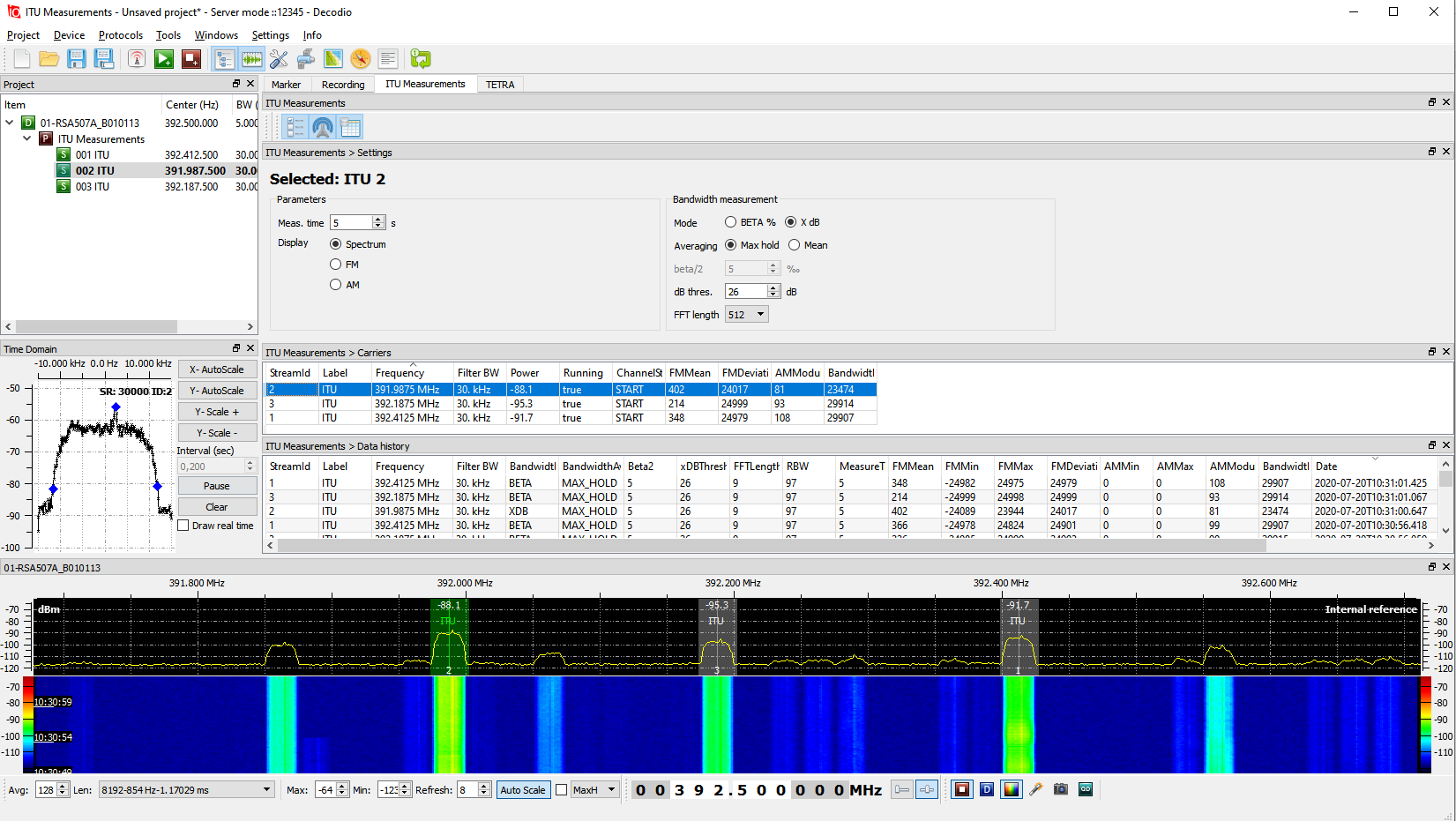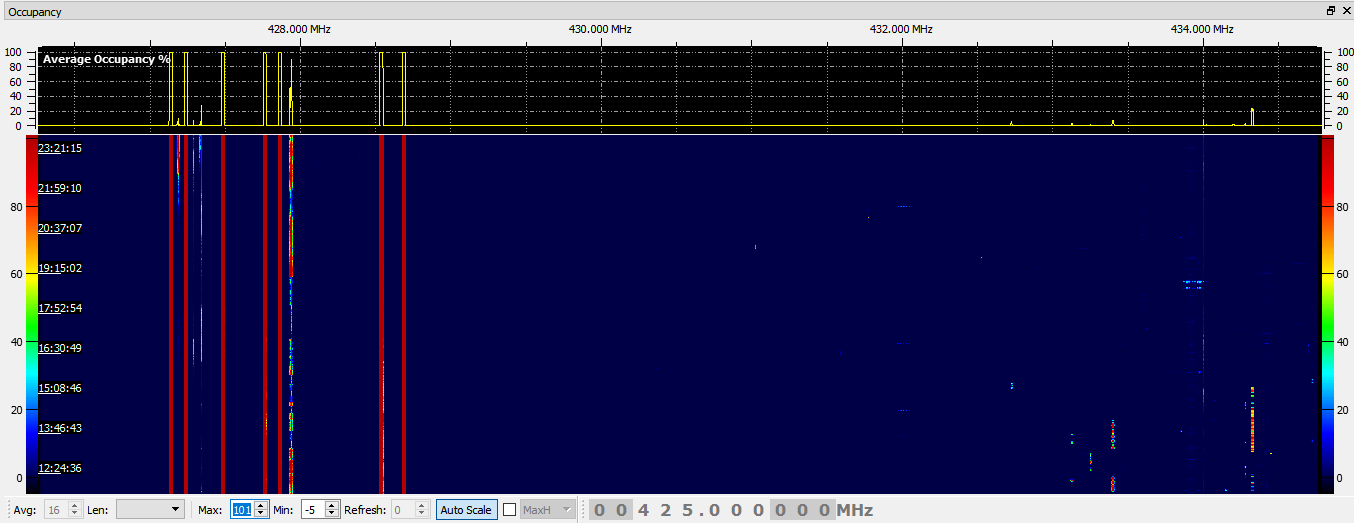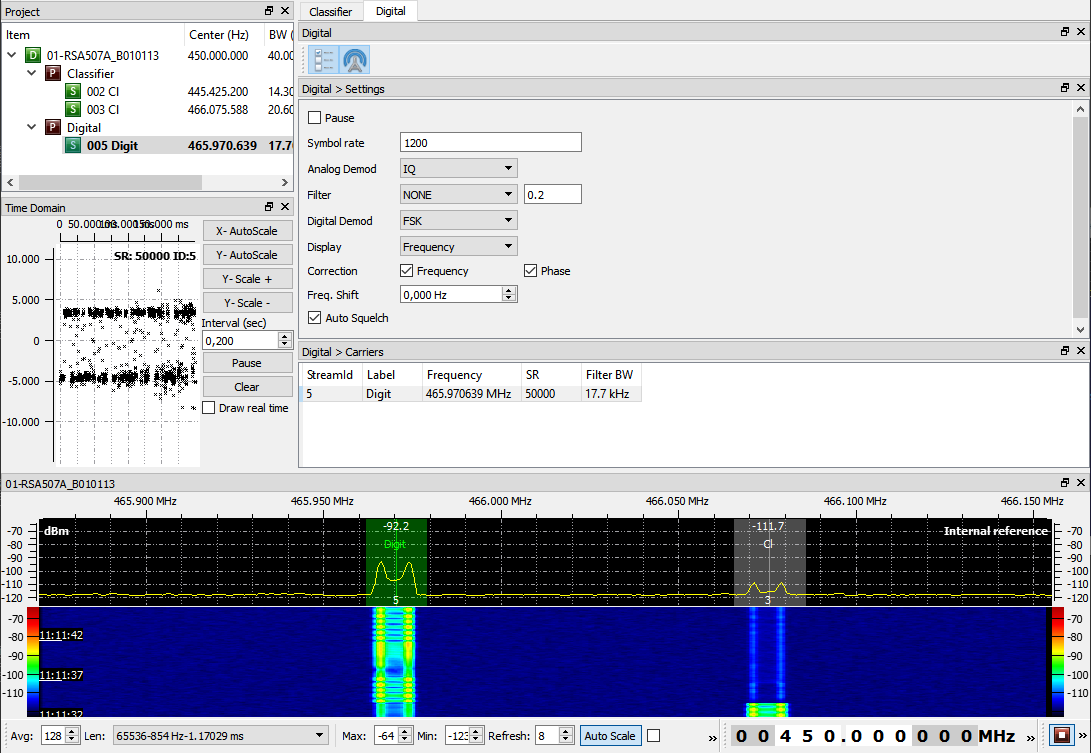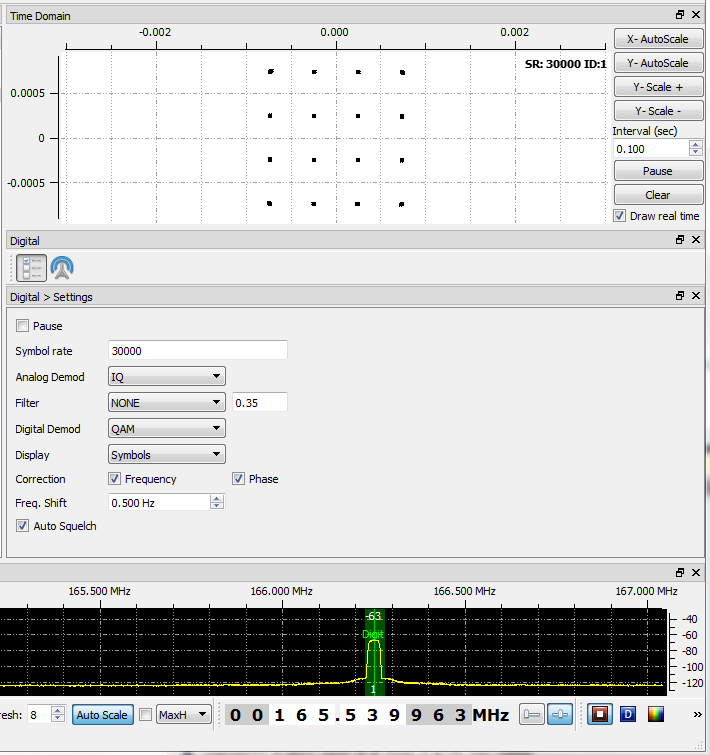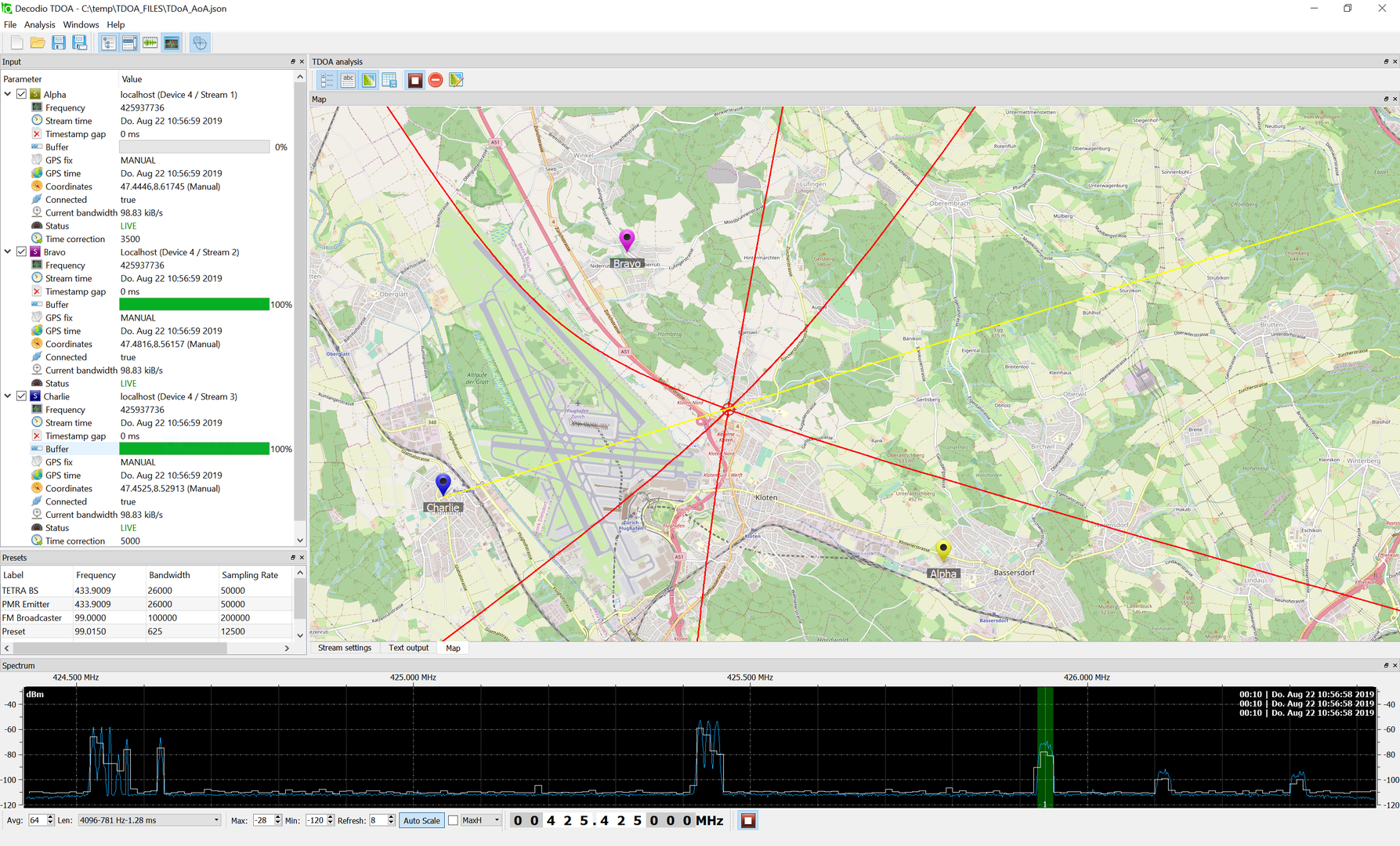DECODIO ReX - ITU Measurements
Decodio has extended its wide range of measurement options with new features and modules to provide measurement and analysis capabilities in line with ITU requirements defined in ITU R SM.328, 377, 443, 854, 1600 and 1880.
This includes tools for manual signal analysis like measurement-cursors for different displays as well as semi-automatic functions for spectrum-occupancy measurement and signal parameter estimation.
Highlights
in line with ITU R SM.328, 377, 443, 854, 1600, 1880 and 2117
Working on live signals as well as signal recordings in different formats
Wide range of supported measurement receivers (SM.377/SM.378)
Supporting different DF systems
Seamlessly integrated in Decodio RED
User-friendly logging and visualization
Details
DECODIO RED
receives a wideband signal from a connected receiver or from a replayed file (e.g. .wav/.rf64, raw or in HDF5/ITU SM.2117).
Narrowband signals are extracted and used for further analysis.
Their raw IQ data is used as a source for different displays like time-domain to measure burst durations, zero-crossing for symbol-rate estimation, autocorrelation, DFT or cepstrum. Signal cursors are used to measure and display the estimated values.
Decodio RED is capable of importing spectrum markers with center frequency, bandwidth and description from various spectrum management databases.
Thanks to the open interfaces it can interact with 3rd party systems for radio regulation and spectrum management.
Spectrum markers with different colours and individual text are saved in an user-editable text-file. They can be used to mark and describe known signals for easier identification. Thanks to the open .csv data format markers can be loaded from spectrum management databases.
The currently measured spectrum can be overlayed by previous measurements to determine changes due to new or missing emitters. Additional power or frequency offsets can be applied for better visibility.
Narrowband IQ-streams in Decodio’s ITU Measurement module are used to estimate the FM Deviation, AM Modulation depth as well as the signal bandwidth based on the x dB and ß% methods in one single step.
These measurements can be performed for several channels in parallel.
All results are not only displayed in the GUI but also stored in user-friendly log-files for further processing.
Wideband occupancy measurements are performed based on Decodio’s noise-floor estimation.
Output files for received signal power over time as well as percentage occupancy can be displayed and analyzed using the integrated measurement cursors and zoom-functions.
Additionally channel occupancy measurements can be performed and all results are provided in easy to process reports.
Measurements according to ITU-R SM.1600 can be performed using the optional classifier and generic digital demodulation module.
User-defined templates are used to map classification results to different transmission modes.
The user can select modulation parameters (demodulator, symbol rate, filter) and can evaluate the demodulated symbol output in an eye or constellation diagram.
The reference parameters can be saved and recalled in order to compare signals against known templates.
Besides the measurement of signal parameters according to the relevant ITU recommendations, Decodio also integrated the support for several direction finding systems.
These devices are completely remote controlled by Decodio’s application and the measured results are displayed on the internal maps.
A TDoA solution for emitter localization as well as hybrid systems combining the advantages of both techniques are available.
Click here for more details
